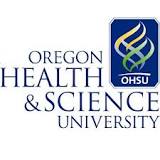Aerobic and Strengthening Exercise for Acute Leukemia
| Status: | Archived |
|---|---|
| Conditions: | Blood Cancer |
| Therapuetic Areas: | Oncology |
| Healthy: | No |
| Age Range: | Any |
| Updated: | 7/1/2011 |
| Start Date: | January 2008 |
| End Date: | June 2011 |
Survivors of childhood leukemia have muscle weakness and impaired mobility (physical
performance), a higher than expected frequency of obesity, and early mortality from
cardiovascular disease. Treatment related neuropathy, cardiotoxicity and general cachexia
may complicate physical performance and establish a pattern of sedentary behavior that may
lead to a lifetime of inactivity. There is limited evidence that children being treated for
leukemia benefit from home exercise programs during the maintenance phase of therapy,
particularly in terms of muscle strength and range of motion. However, there are no
established guidelines regarding the prescription of exercise for children diagnosed with
leukemia. We propose to test the feasibility of an exercise intervention among children
being treated for acute lymphoblastic leukemia (ALL) and hypothesize that children who
participate in the exercise intervention will demonstrate improvements in gross motor
function, strength, flexibility, and cardio respiratory fitness, and that they will have
more favorable body composition when compared to the children who are assigned to the usual
activity group.
The purpose of this trial is to determine the feasibility of an aerobic and strengthening
exercise intervention trial among children during maintenance therapy for childhood ALL by
evaluating participant accrual, participant compliance, and burden to the institutional
staff.
We anticipate that key barriers exist which threaten the successful completion of an
interventional trial of exercise within the ALL patient population. Approximately 2,500 to
3,500 children are diagnosed each year with ALL and similar numbers will enter the
maintenance phase of therapy during a given year. About 22% of those diagnosed are between
5 and 8 years old. Thus accrual is limited by the small patient population but fortunately
most patients with ALL receive their care at dedicated pediatric oncology institutions.
Lack of interest or lack of understanding of the underlying problem of obesity and weakness
among survivors in the ALL population may be additional barriers to accrual. In addition,
families may be overwhelmed by the primary diagnosis of leukemia and feel that they are
unable to take on additional challenges.
Compliance to a rigorous exercise regimen must be ascertained if demonstrable improvement in
motor performance, body composition and cardiovascular disease risk profile are to occur.
Key to this study is not only short-term compliance but designing an intervention that will
promote and improve long-term rates of exercise. Barriers to compliance include length of
time to complete the intervention, number of days the intervention must be administered,
perceived benefit by the participant, difficulty of the intervention, inadequate
demonstration of the intervention, poor understanding by the participant/parent of the
importance of obesity and weakness among survivors of childhood ALL, and health issues in
regard to the primary diagnosis of ALL.
We will open a feasibility study at 3 institutions dedicated to treatment of childhood
cancer: St. Jude Children's Research Hospital,Oregon Health & Science University and
Vanderbilt Ingram Cancer Center. The accrual goal of this study will be a total of 20
patients. The hypothesized outcome for this aim of the feasibility study will be an accrual
rate of 50% of eligible patients at a given institution.
Motor Function The Bruinicks-Osteretsky Test of Motor Proficiency Version 2 (BOT-2) will be
used to measure participants' motor function. Maximum isometric knee extension strength
will be measured with a hand held myomter and hand grip strength will be measured with a
hand held dynamometer. Addionally, flexibility will be measured with the sit and reach test.
Ankle dorsiflexion active and passive range of motion will be measures with a goniometer.
Aerobic capacity will be measured with the modified Cooper 6 minute walk test. Body
composition and vital signs will also be collected.
Intervention Participants will receive counseling and written material regarding the
benefits of exercise and an individualized exercise instruction session based on the results
of their baseline testing and their individual preferences. Each program will include
ability specific stretching/flexibility, progressive resistive strengthening, and aerobic
exercise. Necessary equipment for the strengthening (weights, stretch cords, elastic bands)
and aerobic components will also be provided.A videotape demonstrating each exercise in the
intervention will be given to the participant and their parent."
Detailed written instructions, along with a book to log exercise, will also be provided.
Stickers and small toys will be provided for the parents to give to their children for
completing their exercises. Participants will receive a weekly phone call from an exercise
coach, to answer questions and to progress the intervention. Participants will also receive
counseling and review/progression of the exercise intervention at each usual clinic visit
(approximately monthly). During the pilot study, participants will continue to receive the
intervention for six months, with weekly phone calls tapering to every other week after
three months. The exercise coach will be available to the participant/parent as needed via
phone and/or email throughout the intervention period.
We found this trial at
3
sites
3181 Southwest Sam Jackson Park Road
Portland, Oregon 97239
Portland, Oregon 97239
503 494-8311

Oregon Health and Science University In 1887, the inaugural class of the University of Oregon...
Click here to add this to my saved trials
Click here to add this to my saved trials
Click here to add this to my saved trials